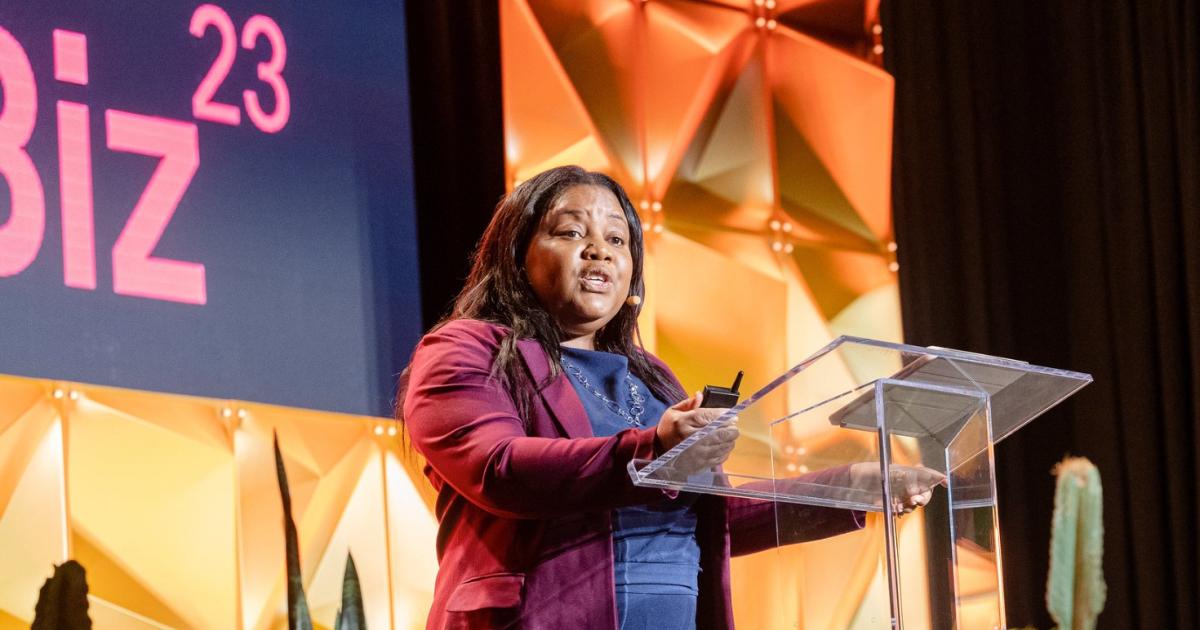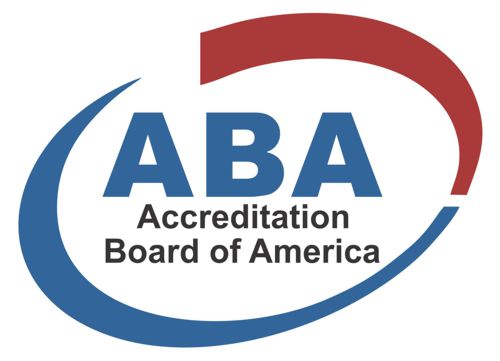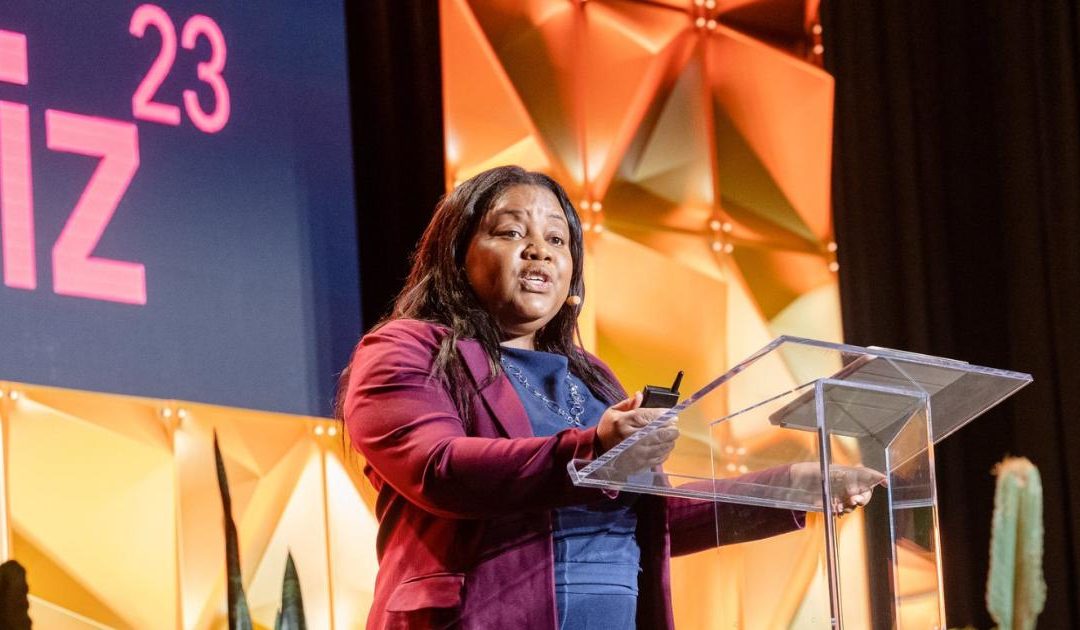
In Lori Llewellyn’s mission to advance corporate environmental reporting and action, one theme has emerged: Companies are failing to seize a specific chance to improve their bottom lines, reduce risk and progress meaningfully on climate and social equity.
“There are huge business opportunities on the table for companies that address water risks and take the leadership approach,” she said at GreenBiz 23 in Scottsdale, Arizona, in February. “As we’ve worked towards building an enduring sustainable economy, the companies that will thrive in the future are those that engage with their communities and incorporate social equity into their environmental action plans.”
The managing director of CDP North America called her work personal. Llewellyn grew up in now-hip Williamsburg, Brooklyn, back when it was overrun by contaminants from industry, including Navy yard shipbuilding, a brewery and a waste treatment plant. Classmates’ parents developed cancers.
“We are in a moment of reckoning of understanding of the interlocked issues of environment and health. People with stories like this one are demanding justice for the disproportionate impact of business as usual on their lives. We hear their cries in growing calls for clean air and water, both around the world and in our own backyards.”
“Without robust environmental data, there can be no peace and prosperity or social equity in our neighborhoods,” she said. “And with data, major actors in our economy can take a quick look at actions for the benefit of society.”
It’s an opportunity for companies to mitigate their contributions to pollution and partner with local governments to address the problems. The troves of data collected by CDP each year tell the story of several steps forward on awareness, yet a standstill in terms of local action.
More cities connect the dots
More than 1,000 cities — from Abuja, Nigeria, to Forest Park, Illinois, in the U.S. — disclosed climate and environmental data to CDP in 2022 through CDP-ICLEI Track, a partnership with ICLEI — Local Governments for Sustainability.
Cities are seeking not only to slash emissions and build resilience but also, increasingly, to address social equity, according to Llewellyn.
The good news is that city governments are becoming more concerned about environmental justice, she said. Sixty-one percent of U.S. cities reporting to CDP are considering vulnerable populations when they conduct climate impact assessments, she said.
Take action for the legacy your corporation leaves behind.
Eighty-five percent of cities globally identified to CDP in 2022 the social benefits of climate action, including food and water security and the protection of vulnerable populations.
More North American cities are tracking data on pollution, too. Cities representing 9 million people — including Houston, Las Vegas and Sacramento — reported air pollution as a significant climate hazard, Llewellyn said.
In addition, 34 cities representing almost 13 million people, including Montreal, Pittsburgh and Orlando, reported waterborne infections and illnesses as a health outcome from climate impacts.
In other words, cities know how environmental risks harm the people least equipped to deal with them, Llewellyn said.
Businesses fail to seize opportunities
How does this compare with the perspectives among the more than 13,000 companies that report to CDP? Take, for example, water security data from North American businesses.
Companies are reporting that polluting local bodies of water harms their reputations. That’s nine years after the Flint water crisis and seven years after low-income Black communities in Newark, New Jersey, fought for clean drinking water.
However, the penalties for polluting water are minor; 76 of 108 North American companies penalized for water violations did not consider the cost significant, Llewellyn said.
“Fines are seen as a part of the cost of doing business, but such episodes can be financially and emotionally devastating to local communities, cities, governments and individual families,” Llewellyn said.
In addition, companies are not setting meaningful, science-based targets for water that take local conditions into account: Only 100 of the 315 North American companies set 950 water targets in 2022 that were specific to particular river basins or facilities, she added.
“Companies ignore water and pollution rates at their own peril for how they continue to operate, let alone thrive and grow when they run under the clean water and fresh air on which they depend.”
On the other hand, those that adopt a leadership role take advantage of huge business opportunities, Llewellyn said.
In 2022, in fact, 167 companies reported to the CDP nearly $250 billion in water-related business opportunities, she said. Yet Llewellyn called this number massively underreported and noted that the true value of taking local action is probably much greater.
“Seizing water-related opportunities increases the resilience of ecosystems and communities alike,” she added. “Companies can take advantage of these opportunities by helping to fill the gap disclosed by cities.”
City governments understand how climate and equity impact one another, but lack the resources to take adequate action, she said, urging corporate leaders to think about the role they play across their communities and value chains.
Cities disclosing to CDP in 2021 said they faced significant resource and equity gaps in climate-related adaptation efforts, but also described access to good data, political transparency and community engagement as supportive forces.
“Take action as a benefit for your company’s bottom line,” Llewellyn urged. “Take action for the legacy your corporation leaves behind and take action for kids in communities like the one I grew up in all over this land. This is the only way we will build a peaceful and sustainable future that is truly equitable for all.”
If you’d like to read the original source of this article please click here Visit Source

